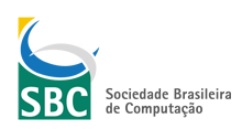A Multi-Agent Extension of Hierarchical Task Network
Resumo
Describing planning domains using a common formalism promotes greater reuse of research, allowing a fairer comparison between different approaches. Common planning formalisms for single-agent planning are already well established (e.g., PDDL, STRIPS, and HTN), but currently there is a shortage of multi-agent planning formalisms with clear semantics. In this paper, we propose a multi-agent extension of the Hierarchical Task Network (HTN) planning formalism. Our formalism, the Multi-Agent Hierarchical Task Network (MA-HTN), can be used in the representation of multi-agent planning domains and problems. We provide a grammar for the domain and problem representation, and show a case study with the translation from a JaCaMo system, a multi-agent system development platform, to our MA-HTN formalism.Referências
Boissier, O., Bordini, R. H., Hübner, J. F., Ricci, A., and Santi, A. (2011). Multi-agent oriented programming with JaCaMo. Science of Computer Programming.
Bordini, R. H. and Dix, J. (2013). Programming multiagent systems. In Weiss, G., editor, Multiagent Systems 2nd Edition, chapter 11, pages 5870–639. MIT Press.
Bordini, R. H., Wooldridge, M., and Hübner, J. F. (2007). Programming Multi-Agent Systems in AgentSpeak using Jason. John Wiley & Sons.
Brafman, R. I. and Domshlak, C. (2008). From One to Many: Planning for Loosely Coupled Multi-Agent Systems. In ICAPS, pages 28–35.
Dignum, V. and Padget, J. (2013). Multiagent organizations. In Weiss, G., editor, Multi-agent Systems 2nd Edition, chapter 2, pages 51–98. MIT Press.
Durfee, E. H. (1999). Distributed problem solving and planning. In Mutliagent systems, pages 121–164. MIT Press.
Durfee, E. H. and Zilberstein, S. (2013). Multiagent planning, control, and execution. In Weiss, G., editor, Multiagent Systems 2nd Edition, chapter 11, pages 485–545. MIT Press.
Fikes, R. E. and Nilsson, N. J. (1971). STRIPS: a new approach to the application of theorem proving to problem solving. In Proceedings of the 2nd international joint conference on Artificial intelligence, IJCAI’71, pages 608–620, San Francisco, CA, USA.
Hübner, J. F., Sichman, J. S., and Boissier, O. (2007). Developing organised multiagent systems using the MOISE+ model: programming issues at the system and agent levels. Int. J. Agent-Oriented Software Engineering, 1(3/4):370–395.
Kovacs, D. L. (2012). A multi-agent extension of pddl3.1. In Proceedings of the 3rd Workshop on the International Planning Competition (IPC), ICAPS-2012, pages 19–27, Atibaia, São Paulo, Brazil.
Nau, D., Ghallab, M., and Traverso, P. (2004). Automated Planning: Theory & Practice. Morgan Kaufmann Publishers Inc., San Francisco, CA, USA.
Nau, D., Ilghami, O., Kuter, U., Murdock, J. W., Wu, D., and Yaman, F. (2003). Shop2: An htn planning system. Journal of Artificial Intelligence Research, 20:379–404.
Ricci, A., Piunti, M., Viroli, M., and Omicini, A. (2009). Environment programming in CArtAgO. In Multi-Agent Programming: Languages, Tools and Applications, Multiagent Systems, Artificial Societies, and Simulated Organizations, chapter 8, pages 259–288. Springer.
Russell, S. J. and Norvig, P. (2009). Artificial Intelligence: A Modern Approach. Prentice Hall, 3rd edition.
Weerdt, M. d. and Clement, B. (2009). Introduction to Planning in Multiagent Systems. Multiagent Grid Syst., 5(4):345–355.
Weyns, D., Omicini, A., and Odell, J. (2007). Environment as a first class abstraction in multiagent systems. Autonomous Agents and Multi-Agent Systems, 14(1):5–30.
Bordini, R. H. and Dix, J. (2013). Programming multiagent systems. In Weiss, G., editor, Multiagent Systems 2nd Edition, chapter 11, pages 5870–639. MIT Press.
Bordini, R. H., Wooldridge, M., and Hübner, J. F. (2007). Programming Multi-Agent Systems in AgentSpeak using Jason. John Wiley & Sons.
Brafman, R. I. and Domshlak, C. (2008). From One to Many: Planning for Loosely Coupled Multi-Agent Systems. In ICAPS, pages 28–35.
Dignum, V. and Padget, J. (2013). Multiagent organizations. In Weiss, G., editor, Multi-agent Systems 2nd Edition, chapter 2, pages 51–98. MIT Press.
Durfee, E. H. (1999). Distributed problem solving and planning. In Mutliagent systems, pages 121–164. MIT Press.
Durfee, E. H. and Zilberstein, S. (2013). Multiagent planning, control, and execution. In Weiss, G., editor, Multiagent Systems 2nd Edition, chapter 11, pages 485–545. MIT Press.
Fikes, R. E. and Nilsson, N. J. (1971). STRIPS: a new approach to the application of theorem proving to problem solving. In Proceedings of the 2nd international joint conference on Artificial intelligence, IJCAI’71, pages 608–620, San Francisco, CA, USA.
Hübner, J. F., Sichman, J. S., and Boissier, O. (2007). Developing organised multiagent systems using the MOISE+ model: programming issues at the system and agent levels. Int. J. Agent-Oriented Software Engineering, 1(3/4):370–395.
Kovacs, D. L. (2012). A multi-agent extension of pddl3.1. In Proceedings of the 3rd Workshop on the International Planning Competition (IPC), ICAPS-2012, pages 19–27, Atibaia, São Paulo, Brazil.
Nau, D., Ghallab, M., and Traverso, P. (2004). Automated Planning: Theory & Practice. Morgan Kaufmann Publishers Inc., San Francisco, CA, USA.
Nau, D., Ilghami, O., Kuter, U., Murdock, J. W., Wu, D., and Yaman, F. (2003). Shop2: An htn planning system. Journal of Artificial Intelligence Research, 20:379–404.
Ricci, A., Piunti, M., Viroli, M., and Omicini, A. (2009). Environment programming in CArtAgO. In Multi-Agent Programming: Languages, Tools and Applications, Multiagent Systems, Artificial Societies, and Simulated Organizations, chapter 8, pages 259–288. Springer.
Russell, S. J. and Norvig, P. (2009). Artificial Intelligence: A Modern Approach. Prentice Hall, 3rd edition.
Weerdt, M. d. and Clement, B. (2009). Introduction to Planning in Multiagent Systems. Multiagent Grid Syst., 5(4):345–355.
Weyns, D., Omicini, A., and Odell, J. (2007). Environment as a first class abstraction in multiagent systems. Autonomous Agents and Multi-Agent Systems, 14(1):5–30.
Publicado
23/05/2016
Como Citar
CARDOSO, Rafael C.; BORDINI, Rafael H..
A Multi-Agent Extension of Hierarchical Task Network. In: WORKSHOP-ESCOLA DE SISTEMAS DE AGENTES, SEUS AMBIENTES E APLICAÇÕES (WESAAC), 10. , 2016, Maceió/AL.
Anais [...].
Porto Alegre: Sociedade Brasileira de Computação,
2016
.
p. 1-12.
ISSN 2326-5434.
DOI: https://doi.org/10.5753/wesaac.2016.33201.



